British Institutions: The City of London
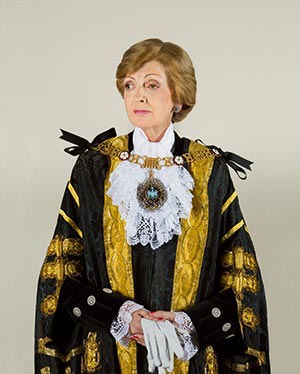
Simply sign up to the Life & Arts myFT Digest -- delivered directly to your inbox.
I happened to be standing by the reception desk in the City of London Guildhall when she walked in, tall and striking, in her sixties but not looking it. She was, however, entirely anonymous in a cloche hat. “You know who that is?” whispered my companion, slightly awestruck. “It’s Fiona Woolf!”
Two weeks later, dressed a great deal less anonymously, she stood on the balcony of her new home, the Mansion House. Alderman the Right Honourable Fiona Woolf CBE was in chain and robes, accepting the cheers of the multitude as the 686th Lord Mayor of London.
This was a novelty in that a small preponderance of her predecessors, 684 of them to be exact, happened to be men. On the day this seemed even more absurd than it actually is. As the participants in the Lord Mayor’s Show passed by, she looked to the manner born. Ruffed but unruffled, she waved her gloved hands, doffed her tricorn hat, clapped to the music and occasionally blew kisses, before getting back into her gilded rococo coach to wave and doff some more.
It was like a little girl’s dream: princess for the day. But, though the Lord Mayor’s Show is proverbially followed by the arrival of the dustcart, this was merely the start for Woolf. There follows a year of breathtaking activity that even the Windsors could never match. One of her recent predecessors, Sir John Stuttard, counted 1,833 engagements, 763 speeches and 23 countries.
The Show was preceded by her formal inauguration, the Silent Ceremony, and followed by the Lord Mayor’s Banquet, the grandest of all the grand City occasions: a dinner for almost 700. But the vast majority of the 10,000 residents and 350,000 people who commute to the world’s most famous square mile do not get one of the gloriously stiff invitations to such events. Even those who join one of the Livery Companies, which are equally bound up in the City’s history and wealth, may have only the dimmest notion of the City of London Corporation, the extraordinary organisation and subculture over which the Lord Mayor presides.
They know little of the shrievalty, the Remembrancer, the Common Serjeant, the Common Cryer, the Ward Beadles, the Aldermen below the Chair, the Alderman above the Chair, the Deputies and the Councilmen; of who wears violet and who wears scarlet; of when the Lord Mayor wears wool and when velvet; of who hands over the key to the Christ’s Hospital seal – let alone the identity of the bloke in the ludicrous furry hat (the Swordbearer).
They are also most unlikely to see the reality of a sentence like this – on the schedule for the Silent Ceremony: “The Remembrancer then advances, making three reverences, and presents to the incoming Lord Mayor the appointment of the Deputy City Gauger, which she signs.”
Tradition, symbolism and ritual underpin Britain’s leading institutions and are important reasons for their stability. But there were times, observing the City, where the symbols only rarely escape into the public domain, that I found the weight of the arcana just a little oppressive, bordering on the weird.
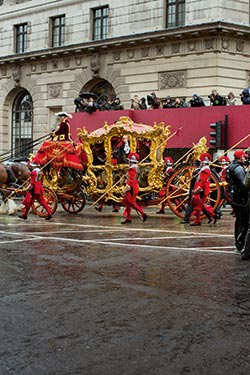
There is powerful witchcraft at work here, though. In Britain there are three major institutions that fit uneasily into modern notions of democracy, and which early radicals never imagined would last this long: the monarchy, the House of Lords and the City of London Corporation. “If I had to gamble on which one of the three would last longest,” says Tony Travers of the London School of Economics, the acknowledged expert on London’s governance, “I would think very hard before backing against the City.”
On one level, the City of London Corporation is just another bog-standard local authority, a ridiculously small one, slightly larger in population than the Scilly Isles, a microdot even on the map of Rutland. The first explanation of its continuing existence is that it was a kind of democracy at a time when the rest of England was nothing of the kind. “It’s based on charters going back to the 12th century,” says Sir John Stuttard, who produced a history, Whittington to World Financial Centre, after his year as Lord Mayor No.679. “When successive Kings wanted to go off fighting, usually against the French, they needed money, so would come to the City to get a loan which of course he could never pay back. So instead he would offer various privileges, special powers and so on. This carried on for centuries.”
The City husbanded its money more wisely than the monarchy and established a quasi-independence – “the ancient liberties” – that held sway while modern London grew up beyond its boundaries. Until late Victorian times, local government outside the boundaries was notoriously higgledy-piggledy; the tiny patch between the Tower and Temple Bar was a model to emulate.
In the modern era, council boundaries have been rationalised regularly, almost obsessively. Given its anomalous size, the City seemed certain to be merged, probably with neighbouring Westminster. It never happened: most of the big changes occurred under pro-City Tory governments; Labour governments have been timorous, particularly when it comes to messing with financial interests; and the City Corporation was perceived as being very good at dealing with the administrative nuts and bolts. Plus, as the Herbert Commission, which looked at London’s councils in the late 1950s, concluded: “Logic has its limits and the City lies outside them.”
Bog-standard is not high in modern local government and even the City has been closing public toilets and cutting back generally. But nowadays it is hard to find outright abolitionists. “In principle, in the absence of a truly democratic local authority, of course it should be abolished,” says John Biggs, the Labour representative for the City and East London on the Greater London Assembly. “And given its size it should be merged. But the fact is it provides pretty excellent public services.”
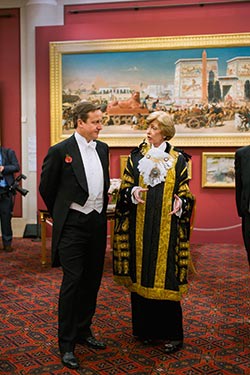
The first problem here is how you define democracy. The Court of Common Council (delightfully known as CoCo) is certainly elected. There are 125 councilmen, deputies and aldermen, one for every 80 residents, a category which includes very few of their representatives. However, the franchise has long included small business proprietors, a privilege abolished everywhere else. Under the Blair government this was actually extended to allow some votes to big business – depending on the number of employees in their local offices. This change is not yet considered a triumph, partly because few big City companies care enough to take the elections seriously.
And there is a reason why the City can run things better than most. As Biggs says: “It doesn’t have the very pressing needs of neighbouring councils. And it’s well-resourced.” That, in context, is a monumental understatement. For centuries the Corporation’s exact wealth was kept secret, but it has now succumbed to demands for transparency. Its ancient treasure-chest, known, with disarming informality, as “City’s Cash”, produced an income of £76m in 2011-12. This money, traditionally, is not used for sweeping the pavement or even running the City’s independent police force but for the grander portion of its work.
“What we hadn’t done in the past was publish our accounts,” says Mark Boleat, the chairman of Policy and Resources, and thus de facto Leader of the Council. “To do that we had to have things valued, like Magna Carta and the Monument, which we are not thinking of selling. Yes, the £76m is money we have available that Southwark does not have. But this is money for London and the nation.”
One of the reasons people like Biggs do not scream for abolition is that the more populous parts of London he represents get handouts from their rich cousin. The City owns distant outposts such as Epping Forest and Burnham Beeches; and, since the 1980s, its portfolio has included the 800 acres of Hampstead Heath. When Margaret Thatcher abolished the old Greater London Council to get rid of her political enemies, no one thought who might manage the Heath: it was beyond the resources of the neighbouring boroughs. Up stepped the kindly City. Problem solved.
The motives behind its philanthropy are often complex and there is no doubt the Corporation has long had an instinct for courting useful popularity. As with everything else, it runs its open spaces very well. “There’s less gold-plating these days,” admitted one councilman. But the pay rates and staffing levels tend to be a touch above average (though only a touch – this place is nothing if not businesslike). It also helps that the City is not party-political, and elections do not produce massive changes in priorities.
In British local government, “non-party” is usually code for rustic Conservatives. It was thus a surprise to discover that Boleat’s joint No.2, Catherine McGuinness, who is responsible for the Barbican Centre, has a Labour party background. “The justification of the City for me is what it does for London as a whole,” she says.
Boleat contends that City elections are actually more democratic than anyone else’s: “A candidate for a safe council ward in most places only has to convince about four people to get the nomination and the seat. We have to go out there on our own and convince the voters.” Outside, however, there are still unbelievers. The Labour MP John McDonnell is adamant that the fancy-franchise has to go: “Votes have got to be based on human beings casting their vote. The Mussolini making-the-trains-run-on-time argument is unacceptable in the modern age.” He also says that, beneath the surface bonhomie, City residents get ignored when there is a clash between their interests and those of business.
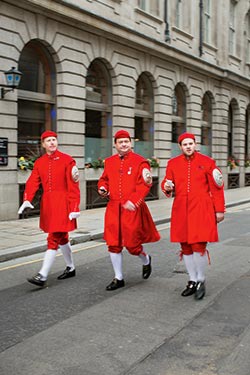
The heterodox Labour thinker Lord Glasman, much respected by party leader Ed Miliband (but more discreetly these days, after Glasman started thinking aloud too often), is both an admirer and a critic of the City. As he wrote in 2011: “As one of the four pillars of the ancient constitution it remains a partner to Parliament (as well as the monarchy and the Church), but not subordinate to it.
“As it survived the Norman Conquest unconquered, it has preserved the status of the freeman, democratic hustings, its guildhall, indeed, its guilds. The only problem is that this most ancient of cities represents the interests of capital alone and is immune to the charms of the common good. Skilled workers are not permitted to join their ancient institutions of economic self-regulation. Only in April, the last recognised workforce of the City of London, the Billingsgate Porters, were abolished, leaving capital as the only inheritor of our civic traditions.
“One important part of Labour’s renewal as a party of the Common Good would be not to abolish the City of London but to extend its ancient liberties, democratic rights and its significant inheritance to all the citizens of London.”
The Glasman view of the Billingsgate Porters might be thought by some a bit starry-eyed. And theoretically the City could certainly be abolished by Parliament. But the fact is there have been 33 years of Labour government in the past century. So far its ancient liberties have neither been extended nor destroyed.
During the Lord Mayor’s Show, one of the most prominent figures is the Pageantmaster, Dominic Reid, all in black save for the white gloves, sword by his side in case of trouble. No trouble is expected. Reid, in real life, a “ceremonial and events consultant”, has planned the parade to the second (St Paul’s South Transept 12.20:01; Temple Bar 13.39:38). The Swiss railways would struggle to match this.
For the banquet, the job is done, with equal attention to detail, by the Remembrancer’s Department at the Guildhall. The organisational heart is a massive pegboard with colour-coded pegs, set up as if to score a game of giant’s cribbage. This is the table-plan: dropouts and late substitutes can be accommodated until the last moment. “There isn’t a computer screen big enough for this job,” I was told.
The real marvel of the night, though, is the food, which somehow manages to be as memorable as the ceremonial: Buckingham Palace has sent in agents to take notes. There is also something awe-inspiring about a dinner demanding white-tie-and-tails from its male guests. It is actually the most egalitarian of all dress codes: every man, no matter how tall, young and handsome, looks as ridiculous as everyone else.
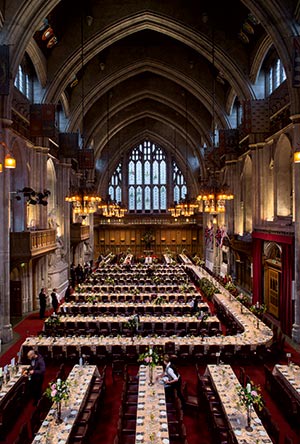
Yet organising occasions like this is only half the Remembrancer’s job. He is also the City’s chief representative at the upstart body upriver, functioning as a parliamentary agent, with rights to attend the Commons and “licensed to draft, promote or oppose private bills”. This is a mysterious branch of the law in any case, and given the City’s reputation for discreet but ferocious lobbying, the Remembrancer’s role is easily demonised. In the minds of some critics, he sits at the Speaker’s right hand, shaking his head the moment his employers’ interests are threatened.
The current incumbent, Paul Double, is a barrister, hugely admired by his colleagues for living up to his title and remembering whatever obscure statute is relevant to a proposed bill. It is impossible to vouch for this: I was informed “the Remembrancer does not give interviews” in tones that suggested he had a status akin to Her Majesty. I was told later he was shy.
I never even worked out which of the strangely behatted or bewigged figures on parade the Remembrancer might be. I was hoping to clock him at the Silent Ceremony, before he sorted out the Deputy City Gauger. Unfortunately, the Chamberlain, who had made his reverences at an earlier stage, parked himself straight in my line of sight. (My more urgent worry was trying not to succumb to the need to cough.)
The essence of the British Constitution is supposedly the separation of the “dignified” and “efficient” arms of government: the ceremonial and the political. The essence of the City is the way it seamlessly combines the two. It even manages to add in a little quiet openness. Most people at the Silent Ceremony were obviously insiders: many wore badges of office from the great livery companies. But my neighbour was an adventurous lady from Stevenage who had spotted an advert inviting applications for tickets.
On the other hand, there is a very clear class distinction within the 125-strong membership of CoCo. At the meetings the councilmen (male and female) and the deputies – the senior councilman in each ward – sit within the body of the hall. The aldermen sit on the dais, flanking the Lord Mayor. These are elected too, but separately, and are on a different, more dignified track compared to the oiks down below. Only aldermen can become Lord Mayor, and the main object of becoming an alderman is to have a shot at the gilded coach.
Only about half the elected aldermen ever make the coach, and there is a very British process to decide which. It is part-ritualistic, part-democratic, part-fix. Possibles have to win the approval of an appointments committee and their aldermanic colleagues before jumping Becher’s Brook: the tryout year in the role of sheriff. If that goes well, they start to move into the line of succession.
Woolf was approached to be an alderman when she was serving in the mini-mayoral role of President of the Law Society. “You know there’s a vacancy coming up for the ward of Candlewick?” someone whispered in a moment that might have been scripted by Trollope. She did the hard yards – more like inches in Candlewick’s tiny domain between Lombard Street and the Monument, but all of them involving (not very dignified) cold-calling. “We were able to meet receptionists and sometimes able to meet the electors,” she recalls. She won in a City landslide: 55-17.
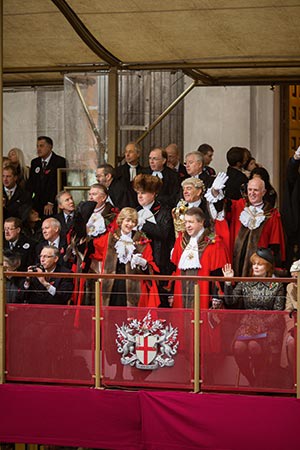
From then on her path to the lord mayoralty was, if not assured, then certainly fast (six years) and smooth. She was obviously qualified, not so much because of the Law Society role but because she is a highly regarded international energy lawyer; she had presence and skill; and she is a woman: “I’m in no doubt that the Court of Aldermen was keen to break the mould of it being a conservative, male-dominated role,” she says. Lord Mayors also need money. They are expected to shoulder a fair amount of their own expenses, including the provision of red wine (though not – another wonderful City anomaly – the white).
The only previous woman Lord Mayor, Dame Mary Donaldson, served 30 years ago, which is a while even in an organisation with an elephantine memory. This gives her successor some scope for making up her own version of official clothing (“There’s a limit to the amount of black I want in my wardrobe,” she says). And whereas Dame Mary was married to the Master of the Rolls, who had a top-table place in his own right, Nicholas Woolf, a chartered accountant, has scope to develop his own role as male consort. He entered the banquet with his hands behind his back, a technique he must have learnt from Prince Philip. His wife made an impact before taking office, by initiating a revamp of the Lord Mayor’s charity programme. She is also making a noise about the need for women in all the top City jobs, not just this one.
Twenty-first-century Lord Mayors have a new problem, being noticed at all amid the focus on the elected Mayor of London, a job that did not exist in Dame Mary’s time. The advent of Ken and Boris has helped sharpen the City’s sense of what the Lord Mayor is for. “It is not a municipal role,” says Woolf. “I characterise it as being a dedicated ambassador for the whole of the UK’s service sector.”
And thus the City moves onwards: Mark Boleat making sure the place continues to function; Fiona Woolf in her urbi-et-orbi role, selling the Square Mile, London, and the UK to the world; the Remembrancer keeping his ears open at Westminster in his don’t-you-dare-call-thislobbying way; fabulous display all around; altruism and public service the watchwords. But on the City’s own terms. Beneath all the gold braid and mystique, there is a bare-knuckle determination to ensure that it is still its own master come the next millennium.
To comment on this article, please email magazineletters@ft.com .
To read more by Matthew Engel on British institutions go to www.ft.com/engel
Comments